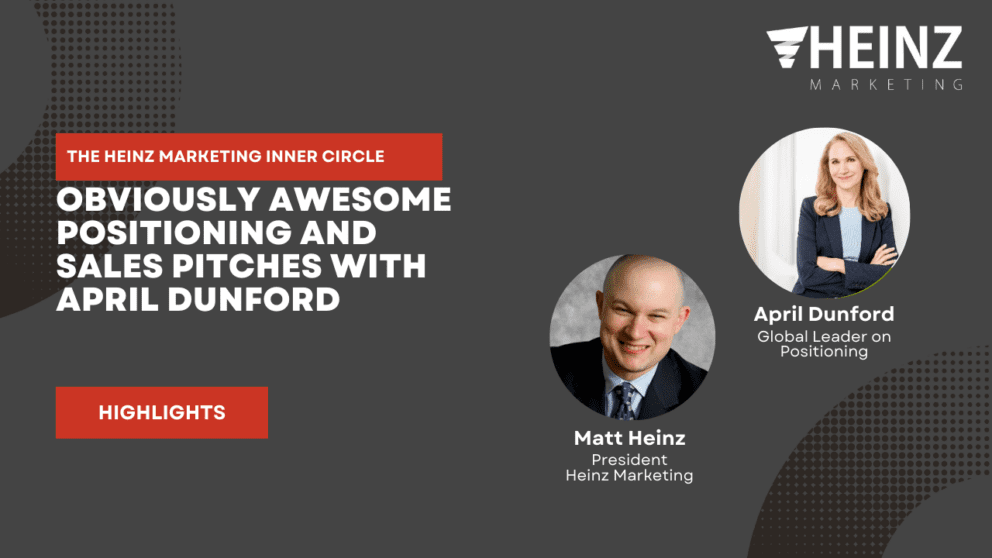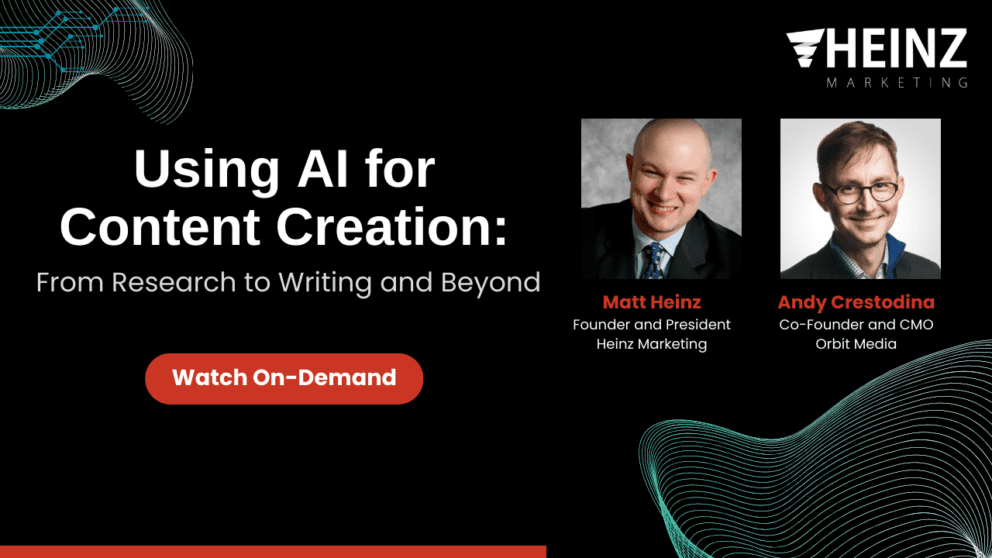Developing a Content Strategy for the Healthcare Industry

By Brenna Lofquist, Senior Marketing Consultant / Client Services Operations at Heinz Marketing
There’s been a lot of talk about trends for 2023, which we always see at the beginning of a new year because, duh. People want to know what the future holds and what they will potentially have to prepare for.
My colleague Mina recently wrote a post on trends specific to the Healthcare industry and identified that more companies are moving creative studios in-house. I figured lets expand on that and talk about how to develop a content strategy, especially since moving creative in-house can seem daunting and expensive, hopefully this puts you at ease (at least a little bit).
What is a content strategy?
One more thing before we dive in to the good stuff. What is a content strategy? To put it simply it’s the planning, development, and management of content. The Content Marketing Institute says think of a content marketing strategy as an outline of your key business and customer needs, plus a detailed plan for how you will use content to address them.
In my experience, things like content strategies, can look very different depending on who you talk to. And that’s okay. There’s a lot of variety in the marketing industry and the main point is to determine which content strategy works best for your organization. Okay, now lets get into it.
First things first
Before you can even begin to think about a content strategy there’s something you should do first. If you don’t already have a content inventory, library, whatever you want to call it, this is where you should start. It’s nothing fancy. Create an excel sheet and inventory all existing content. You want to include some important information for each content asset such as:
- Target audience
- Funnel stage (top, middle, bottom)
- Content format
- Content title
- Topic or focus area
Once you’ve completed this, you’ll want to conduct an audit of the content to see where you have gaps. This can easily be done by creating a few pivot tables to summarize the number of content assets by the information listed about. The ones to really focus on are target audience, funnel stage, and topic or focus area. When identifying content for healthcare campaigns or other marketing efforts, you want to make sure you have options across the board so you aren’t delayed because you don’t have content available.
After completing these two steps, you should be ready to develop your healthcare content strategy.
How to create a content strategy?
First, if you don’t have a few core topics or focus areas you’ll want to start here. You can also think of these as themes. To develop themes, I recommend doing research to figure out what’s going on in the industry, hence the Healthcare industry trends post.
Once you’ve found a few trends, try and link them back to challenge messages from your messaging framework. This is important because it automatically creates a connection between the trend and how your product or solution can help or solve the issue. A few examples of healthcare themes are patient consumerization and personalization of care, integrated technologies for a modern practice, and the risk of value-based care.
If you already have core topics or focus areas defined, you’ll want to do the same thing and identify trends that you can map to those challenge messages. Once you’ve completed this step, move on to the content (or editorial) calendar.
Content calendar
The content calendar is going to take all of these pieces (content audit and themes) and combine them to determine which content to create when. Usually a content calendar is broken down by quarter however, you can adjust it based on your goals and objectives. While going through this exercise you’ll want to keep the company’s goals in mind. Maybe there’s a specific initiative to focus on such as personalization of care. If that’s the case, you’ll want to prioritize development of content in that area if it’s needed.
This is where the content audit comes into play. Take a look at the audit and see how many pieces of content you have for the topic and how many pieces of content fall in which funnel stage and by target audience. In some cases, personalization of care might be applicable to certain personas, not all, in which case you’ll want to filter by the applicable personas. Do you have any gaps? Or areas where content is lacking?
Here’s a scenario using the personalization of care example. Let’s say this topic is especially important to your Champions (Practice managers) and Influencers (Physicians/doctors/providers) and when looking at the content audit you notice most of the content is for top funnel, there’s a little bit of content for middle and none for bottom funnel. This is where you’d want to focus your content development efforts for the quarter. You need to ensure you have content available to support the companies’ initiatives.
Below is an example template of an editorial or content calendar. It’s pretty simple, just fill in the blanks!

You’ll go through the same process until you have each quarter filled in and understand which content needs to be developed when. After everyone is aligned, you can move on to content development.
Content development
This step can take different forms, as noted earlier in the post, figure out what works best for your organization. At Heinz Marketing when working with clients, we put together a table of content ideas. Ideas range from net new to repurposed assets, focusing on filling the gaps identified in the content calendar. You want to focus on the quarter that’s coming up, depending on where you’re at in the current quarter. Content development can take time, so make sure you’re giving yourself and your team enough time.
We use a priority ranking to help clients know where to start when developing content. The ranking is usually based on effort combined with goals and/or where the content gaps are. If we continue using the personalization of care example from above, you’d want to prioritize creation of a bottom funnel asset over middle funnel. You already have a few middle funnel assets but none for bottom funnel, so start there.
Effort depends if the asset is net new or repurposed. Repurposed content is easier to create because you already have most of the information. An example of a repurposed asset might be taking a long-form whitepaper and taking the key sections and turning it into a checklist or infographic. You are distilling the information into a different format that can act as a summary or even lead-in to the longer form asset.
Once you have your priorities in order, you can start creating content!
Now what?
You’ll want to revisit this exercise once a quarter. Healthcare initiatives might change which could impact the company’s objectives; therefore you want to make sure your content strategy can support those changes. There’s nothing worse than everything coming to a halt because you realize you don’t have usable content. So, as you work through each quarter, you’ll want to continue developing future quarters in the content calendar so content development efforts continue.






